|
|
|
|
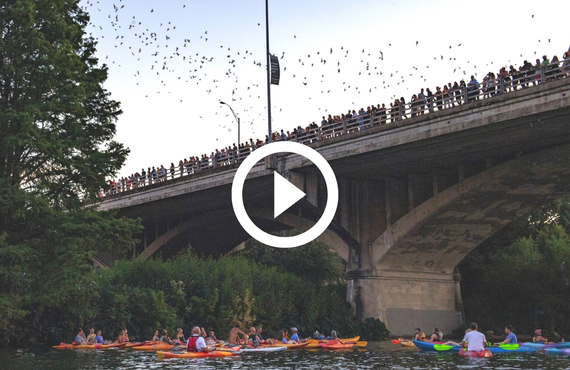 Congress Avenue Bridge, Austin
Ever heard that everything's bigger in Texas? Not only do we have the largest bat colony in the world – 15 million bats at Bracken Cave near San Antonio, but the largest urban bat colony is in Austin. Both are colonies of Mexican free-tailed bats that migrate here during spring and summer and eat their weight in insects each night, much to the delight of farmers.
Watching a bat emergence is a breathtaking, unique experience. Clouds of bats fly out of their roost at twilight and swirl in streams across the sky – see the video, Bat-Watching Across Texas for a sample. Then check out Bat-Watching Sites of Texas to find a spot to visit. Bat numbers usually peak in July.
White-nose syndrome is a fungus that kills bats, and we're keeping tabs on it. If you see a dead bat, send the location, date, and a photo to wns@tpwd.texas.gov. You should never touch a bat, but do make time to experience a bat emergence.
|
|
Do These 2 Things for the Birds
|
|
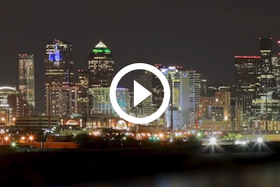 Lights Out April 19-May 7
Each spring, a billion wild birds migrate through Texas at night. Artificial light attracts them the way it attracts moths, causing some to circle lit areas endlessly or crash.
You can help by being a part of Lights Out Texas and turning off or dimming non-essential lighting April 19 to May 7. Find out more from the video, Lights Out Texas! – Spring Migration 2020.
|
|
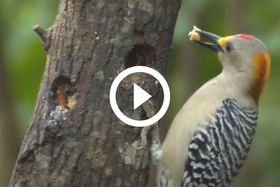 Keep Feeders Clean
Be sure to clean your bird feeders and surrounding areas every 2 weeks to curb any illness among birds. If you spot sick or dead birds nearby, stop feeding for at least 2 weeks. See our press release for more feeder tips and the proper way to clean them.
Watch the video, Repurposed Rolls, to learn how a little recycling can get you a biodegradable bird feeder!
|
|
|
NEW: TMN Webinars & 3 More Bird Cities
|
|
 The Texas Master Naturalist Program has kicked off an exciting new webinar series called #TMNTuesdays. Topics cover different aspects of the natural world and our interaction with it.
These free webinars take place the 2nd Tues. of each month at 12 noon, and everyone is invited – but please register first. See #TMNTuesdays to register and find out more about the series.
|
|
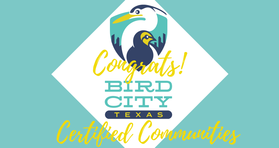 Galveston, San Antonio, and Surfside have joined the growing list of Bird City Texas communities. All 3 have improved habitat, found solutions for threats to birds, and continue to grow community engagement with their native birds.
If you like birding, add these cities to your visit list! Read more about their efforts and the program in our press release.
|
|
|
 The freeze affected our entire state, but coastal wildlife appears to have been the hardest hit, with more than 3.8 million fish killed. We've adjusted fishing regulations to help them make a comeback. Sea turtles became cold-stunned and couldn't move. Your Texas Game Wardens and other partners rescued thousands from the Gulf, until it warmed up enough to release them. Watch the video of sea turtles being saved.
As for our winged wildlife, unfortunately some birds did die; but it appears no one bird species will be impacted. Bats were hit harder, but as a whole, they're expected make a full recovery. For more on this, see the video, Bats Die From Winter Storm (some images may be disturbing).
The freeze didn't reach monarch butterflies overwintering in Mexico. But early arrivals to Texas lacked blooms for nectaring and milkweed for egg-laying. The effect on their numbers won't be known until next winter's count – they were already down 25% at last count, so plant that milkweed!
For more about the effects of the freeze and our wildlife management moving forward, stream the most recent #TMNTuesdays webinar, Impacts of Winter Storm Uri on Texas Fish and Wildlife.
Living with Black Bears in West Texas
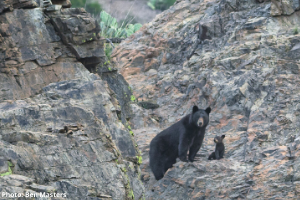
For those who appreciate the wild things and wild places of Texas, the recolonization of black bears in West Texas is thrilling news. But as bears have moved into areas where they interact with humans, inevitable conflicts have occurred.
“There’s a lot of excitement about the return of this beloved species,” said Borderlands Research Institute Director, Dr. Louis Harveson. “But most people don’t know how to live in bear country. We hope that education and outreach strategies, along with more research studies, will help us coexist with black bears as they return home to their native range.”
The Borderlands Research Institute at Sul Ross State University is partnering with Texas Parks and Wildlife Foundation to raise private funds for BRI’s Human-Black Bear Coexistence project. Show your support by making a donation.
|

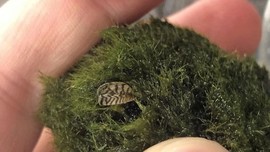
Invasive zebra mussels have been found in moss balls sold as aquarium accessories. If released into the wild, zebra mussels can invade lakes and do damage to our native aquatic life, water systems and more.
If you have aquarium moss balls, destroy any zebra mussels by freezing, boiling or bleaching each moss ball, then put them into a sealed container and throw the container into the trash. Read our press release for more information.
If you're an aquarium owner, never dump your tank into a natural body of water or flush its contents. Don't let your pets become pests!
|
|
|
|
|